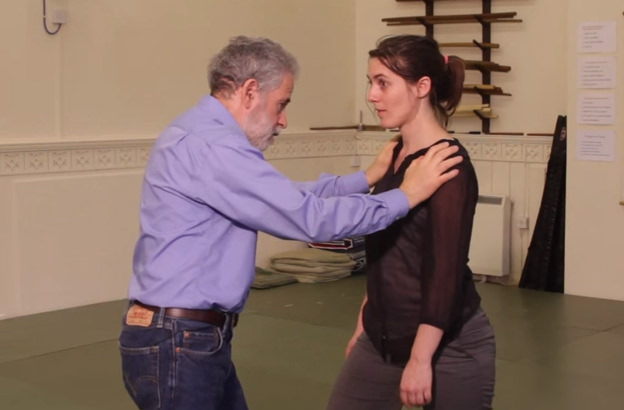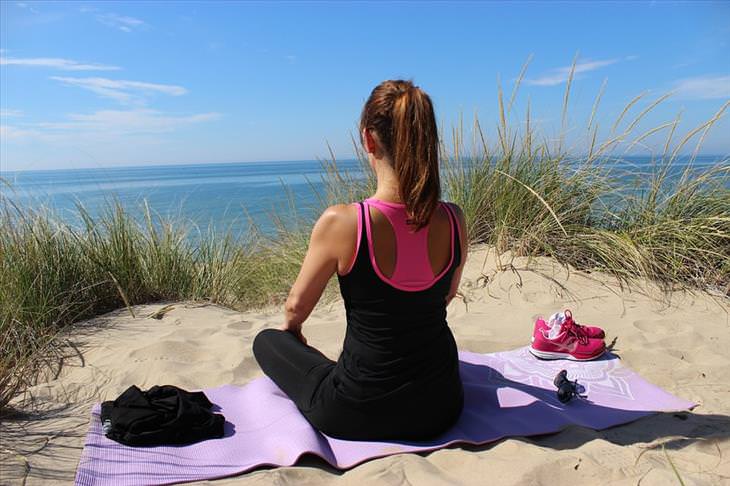When we feel threatened or shaken, we can see it through our posture, breathing and movement, our bodies can go into shock or sometimes even crash. Many people think that the solution to overcoming a crisis or challenge comes primarily from a change in mind, but the truth is that 98% of our thoughts come from the subconscious and no thought will be fully realized if it isn't connected to the body. In order to easily cope with the pitfalls of our lives, we must understand that our bodies have a great influence on our behavior, and it is important that we learn how to know our bodies and not separate them from the way we act and think. Precisely this principle focuses on the Embodiment approach, which teaches us how to build awareness of our bodies and properly cope with stress and obstacles. With this approach, we will present you with exercises to work with the body that will reconnect you to your mental abilities and help you stand up any challenge.  We all have automatic trigger responses to different situations, for example, if we were to be called to our boss's office, we would get nervous or start feeling stress. However, what people aren't aware of is that our bodies also react instinctually. The way we walk, breathe and stand, consciously or unconsciously, affects our mentality and our experiences. The key to changing these responses is to think of our body as a sequence of sensations and to examine more positive and calming response patterns based on listening, movement, breathing, and other physical activities. Therefore, the solution must begin with control of the body and the feelings leading to the reaction, and by changing your automatic reaction patterns you will achieve significant results that, over time, will turn into a habit. By knowing your physical experience, you will learn how to control your thoughts, how to overcome stressful situations and confront your body's responses to panic and stress.  Working with the body is very easy and effective because the body responds to every form of distress and this allows us to "read it" easily. When you change your negative response pattern in a different format that involves setting boundaries, listening or controlling pain, you change consciousness through your body. Once you identify these familiar patterns of action, you can change the response you feel to a more responsible, and calculated response. With the 7 Embodiment method-based exercises, you can increase the space of your body's responses and move closer to realizing your personal potential. 1. Relaxation between the eyes, tongue, diaphragm, and body – it's not for nothing that Mystics believe in the third eye and that its closely related to the knowledge and vision of humans, which is why it's important to keep this area relaxed. Start with the area between the eyes, try to relax, and make sure your tongue is not constricted your abdomen and diaphragm are relaxed and the body is loose and not tense. 2. Posture - the body and mind work together, so it's important to be aware of how we stand. Posture is expressed in awareness of the environment, smells and the body itself. 3. Breathing - A short breath is a breath that brings in a small amount of air and is designed to wake us up. In contrast, a long, deep breath from the diaphragm brings more air into the body, allowing it to relax and choose the desired response more considerately. 4. Control of pain - If you notice, when you feel physical pain your body tenses up, the pain is sharp and breathing stops for a moment. Now try to relax, practice the previous 3 sections, breathe deeply with your stomach, release your tongue and loosen up your body. When the same pain is applied this time (with the same intensity), you'll hardly feel it. The reason for this is your relaxed body that made it easier to ignore pain, try it and you will certainly be surprised by the results!  5. A new approach to aggression - repeat the previous section while another person recites annoying sentences to you ("You're weak", "You're not good enough ...") and see how you react. Try it again only this time you have to calm your body and concentrate on breathing, note that the body is not tense. Not only will you feel less pain, but you will also be less aggressive towards the person in front of you. When we are in situations of stress or confrontation, the body tends to contract and tense up. Our typical reaction is to defend ourselves (even violently). But once we bring the body's awareness into play, we change our response and can replace it with more balanced behavior. 6. Lie - The body signals to you and the people around you when you are lying. Ask another person to push you and try to resist them with your body, at this time you will say one truth and one lie. while lying, you'll feel your eyebrows rising and your body will have a hard time resisting. The reason for this is that our bodies are "transparent" and cannot conceal lies, the inevitable raising of eyebrows, distracts your attention from the resistance. Now consider what this means about you... 7. Decision Making - When you are required to make a decision under pressure, the choice you make will arise from stress. When your body is relaxed, your decision may be different and much smarter. It is therefore important to train the body how to deal with stress, with limits, lies or any other challenge that may arise in the future. We will now present 3 simple exercises from the Embodiment Training Workshop, which focuses on the three dimensions of our bodies. Each physical object has three dimensions: width, length, and depth, as does the human body. The difference between our body and a chair or table lies in the fact that we have an experience of life and energy. To begin the first exercise, stand on your feet and observe the way you stand. Length – as you stand on your legs picture them as roots of a tree. If you sink a little more into the ground, you'll feel heavier – usually, those who are depressed, powerless or stubborn will seem as though they can't be moved. If you imagine your body as a tree, your trunk should grow upwards and your treetop should reach your neck. If you lift your head up, you'll feel slightly arrogant or condescending, but, if you straighten your back and neck, you'll feel more relaxed and confident. Width - width is actually a perception of place, think of thin people who stand with their hands together, people who are cold and hold themselves, or people who swing from side to side (just as they do in life). Part of embodiment is presence and visibility, but you don't have to stretch out your hands and take over a space all the time. However, if you're having difficulty feeling your presence, try to raise your arms along your shoulders, as if touching an invisible wall, feel your width and then bring your hands back towards your body while you stay with that feeling. Depth - in this dimension we are not talking about muscles or weight, rather about movements. For example, if you run and rush to a certain place, your body will tilt forward, however, if you look at someone your body will move backward as if hesitant. In addition, depth is very connected to your culture, for example, people who maintain personal space as opposed to people who are more open to the environment. If you try to stand still and swing back and forth without moving your legs, you'll feel the depth of your body and the trust you feel towards the person standing in front of you. In the second exercise, after you've found and explored the three dimensions of your body, take a short walk, concentrate on the dimensions of your body and examine how you respond to objects and people (e.g., do you shrink back when smiled at or do smile back). In the last exercise, try to think of something or someone that warms your heart. Start walking again, keeping in mind the 3 dimensions of your body, and think about the person you chose. Pay attention to your walking, your rhythm, and the dimensionality your body creates. Soon you will notice the difference in your walking and posture and after that success, you will be one step closer to embodiment! |
--
You received this message because you are subscribed to the Google Groups "Keep_Mailing" group.
To unsubscribe from this group and stop receiving emails from it, send an email to
keep_mailing+unsubscribe@googlegroups.com.
To post to this group, send email to
keep_mailing@googlegroups.com.
Visit this group at
https://groups.google.com/group/keep_mailing.
To view this discussion on the web visit
https://groups.google.com/d/msgid/keep_mailing/CAH3M5Os5SaOLHdDGWvY_wjWx0wzH_nwjGvcE7KA5GQUv2KgQCw%40mail.gmail.com.
For more options, visit
https://groups.google.com/d/optout.





I really liked your Information. Keep up the good work. Tips for Preventing Back Pain
ReplyDelete